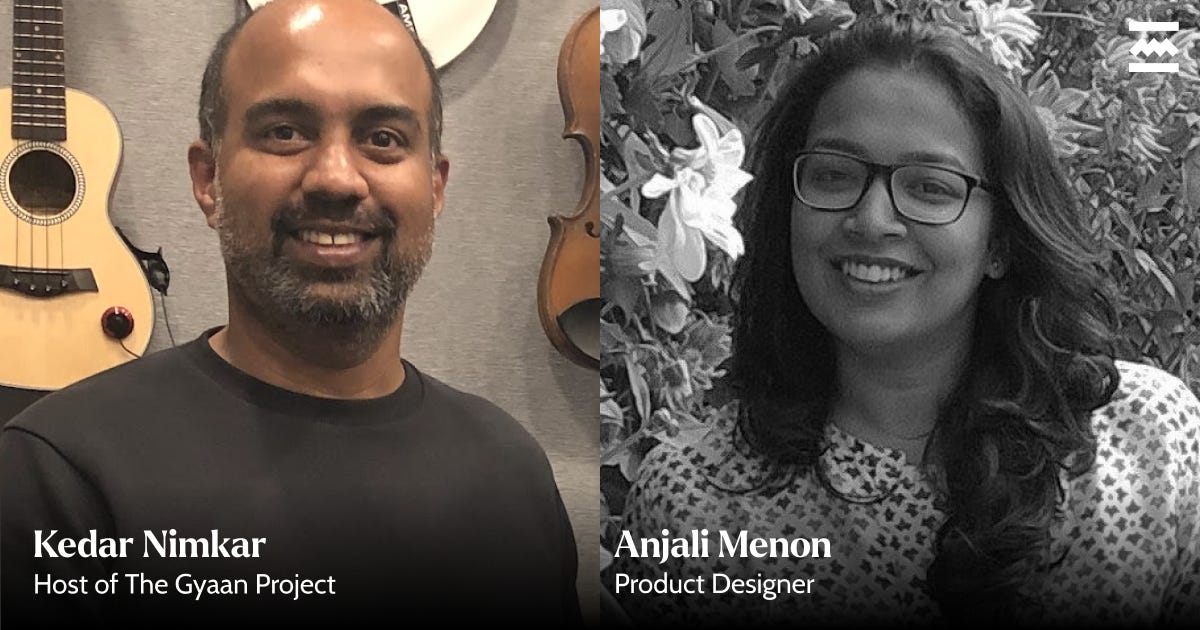Not just child’s play: 4 lessons in playground design from Anjali Menon
How inclusive design creates better space for everyone
This IPL season, we’re reminded that every cricket legend begins on a playground. But what if those spaces didn’t exist? In this week’s TGP Samachar (formerly ▶️ Audiogyan Ep.153), designer Anjali Menon shares how building better play areas can shape India’s future talent. Here are four clear, actionable lessons that are perfect for young designers, parents and anyone working at the intersection of design, childhood and public space.
Anjali Menon is a designer and co-founder of Gudgudee (when we recorded this conversation), a studio known for creating inclusive play spaces. Her work has been featured by Forbes India and showcased at the United Nations in Vienna. She continues to shape conversations around design, childhood, and public space in India.
1️⃣ Where did the idea for building better playgrounds come from?
Short Answer: It started at a blind school.
Long Answer: Our journey began around 2011 when Aditi (Agarwal) and I visited the Blind People's Association in Ahmedabad. We noticed these children never played outside. They were overly protected and confined indoors. Initial instincts were to just add safety features, but we soon realized play is more than climbing or swinging. It is about sensory experiences, cognitive development, communication, risk-taking, and conflict resolution. We combined this understanding with observations of occupational therapy sessions to create our first prototype. When these prototypes broke after a week of intense use, we knew we were onto something meaningful! It evolved from a four-week course into a six-month passion project, eventually becoming Gudgudee.
76% of elementary school in India have playground facilities according to DISE 2022
2️⃣ Why focus on children with special needs when all kids use the playground?
Short Answer: 80-20 Rule Paradox
Long Answer: I truly believe that when we design for the 20% (children with special needs) we actually make playgrounds better for everyone. For example, when we add sensory elements like textures, sounds, and colors for visually impaired kids, all children find the playground more engaging. It’s like cricket: when you build a team with diverse skills, everyone benefits. Inclusive design isn’t a compromise, it is an upgrade. Every child, regardless of ability, gets a richer, more stimulating play experience. That’s the magic of designing for diversity, it lifts everyone up.
What does inclusive play mean?
3️⃣ What is the toughest part of selling a playground?
Short Answer: Design isn’t everything.
Long Answer: In the beginning, we believed good design would be enough to convince people. But clients wanted more. They asked if the playground would last, if it was affordable, and if it was better than what already exists. So, we had to shift our thinking. We started focusing on quality, safety, and cost. We picked better materials. We made sure our designs were not just creative but also strong and reliable. We didn’t want people to choose us only because we had good ideas. We wanted them to trust the full package. That’s when we truly grew. I learned that being a designer also means being practical, like a builder and a business owner.
“Design is a political act. What we choose to design and more importantly, what we choose not to design and, even more importantly, who we exclude from the design process—these are all political acts.” : Mike Monteiro
4️⃣ Who do you work with on these projects?
Short Answer: Parents & Dreamers.
Long Answer : We work with schools, NGOs, real estate developers, and sometimes the government. But many of our best projects begin with parents who want better play spaces for their kids. They often become our strongest supporters. With NGOs, we talk to infrastructure teams and teachers. In government projects, we follow public space guidelines. Most of our collaborators are not designers, but they understand how important play is. That shared belief makes all the difference.
What do you think BCCI should do with ₹20,000+ crore of tax-free revenue to improve design of play spaces? Let us know 👇
As the IPL lights up our screens and Virat Kohli steps away from Test cricket, it’s a good moment to ask, where will the next Kohli come from? Every icon starts small, on dusty grounds and makeshift pitches. If we want more legends, we need more playgrounds. Safe, inclusive, and well-designed play spaces aren’t a luxury rather they’re a necessity.
If you are interested in the full conversation 👉 Youtube | Substack | ApplePodcast





